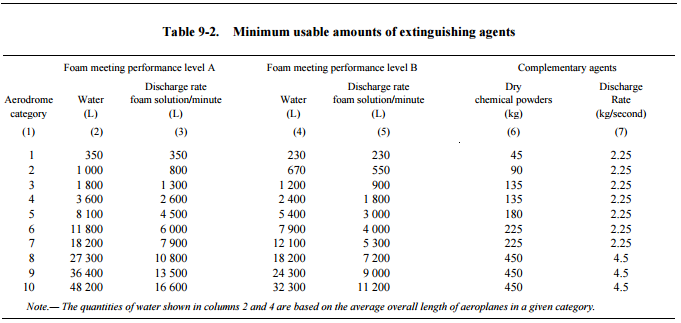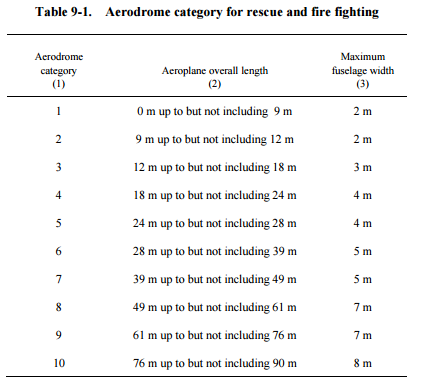Thats already pretty accurate, please allow me to go a bit deeper ![]()
ICAO Requirement (Annex 14, Chapter 9 and partially Airport Services Manual Part 7):
- Depending on the airport fire fighting category (1 through 10 as per ICAO standards), the airport fire department has to have a specific values of fire extinguishing agent(s) available. For example, a category 10 airport like Frankfurt (Category 10 = in short: can handle A380 and 747-8), the values below have to be fulfilled.

- How is the airport category calculated? See below:

-
In general, the response times are equal everywhere. The fire department has to reach any aircraft movement area within three minutes, while two minutes are recommended with 50% of their required discharde rate. Why? The aircraft fuselage is mostly made of aluminum, therefore a fuel spill fire can burn through the aircraft skin (fuselage) quite easy within two - three minutes. As a result, the initial fire truck will be protecting mostly the fuselage and the other vehicles will try to sweep the fire away from the aircraft itself, creating a rescue path.
-
As many of you guys already implied, at airside the fire department has different objectives than units protecting buildings and highways. However, at many (if not all) airports, the airport fire department is responsible for structural fire fighting (protecting buildings in general), motorways in close proximity of the airport as well as airside ops. As you have noted further up, the airport category will decrease if you have to reduce your available extinguishing agent capacity in case you have to respond to a structural fire. That is why you see a LOT of fire trucks on airports

If you require additional information, please let me know and I will try to get things clarified!
EDIT: @pderuiter - To clarify your question, you may need to have more than one fire station in order to meet the response times. There is also a specification section for that in the above mentioned document.